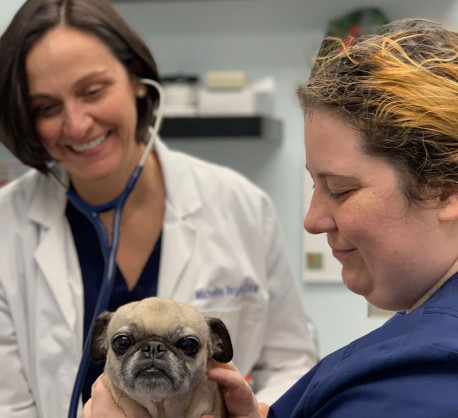Diabetes Mellitus in Dogs & Cats
Did you know that it is estimated that 1 out of every 100 dogs that reach the age of 12 and between 1 in 50 and 1 in 500 cats will develop diabetes mellitus? So while you may feel lost if your pet has recently been diagnosed, you are not the only one navigating the care process and have quality veterinary support and medicine to guide you.
Diabetes mellitus occurs in dogs and cats when their bodies stop producing insulin, have inadequate levels of insulin, or have an abnormal response to insulin. It’s most commonly found in middle-to-older-aged cats and dogs, but can also develop in younger animals. In this case, it may be a sign that your pet is genetically predisposed to diabetes.
Signs of Diabetes Mellitus
- Frequent urination
- Drinking a lot more water than usual
- Constant hunger
- Weight loss
- Cloudy eyes
- Deteriorating coat (dry and dull)
- Less active
- Sleeping more
If you begin to notice that your pet is displaying one, or some, of the above signs and symptoms, it’s important that you bring it in to your veterinary clinic for a checkup. While these signs are indicative of diabetes, they can also point to other diseases as well. The only way to positively diagnose your pet with diabetes is to perform a test that shows the presence of glucose in both the urine and at a high level in the blood. Your veterinarian will also look at your pet’s overall health to rule out any other possible diseases.
Managing Your Pet’s Diabetes
Because there currently is no cure for diabetes, it is crucial to develop a management plan with your veterinarian should your pet receive a positive diagnosis. Since diabetes is caused by a shortage of insulin, it is likely that your pet will be placed on an FDA-approved veterinary insulin.
Your veterinarian will work closely with you to help find your dog or cat’s correct dose. Once you find the correct dosage, you must administer the insulin at the same every single day in order to effectively manage the diabetes. Your veterinarian might also make additional recommendations such as type and quantity of food, as well as best times to feed. Proper management is the best way to ensure that your pet continues to live a happy and healthy life!













